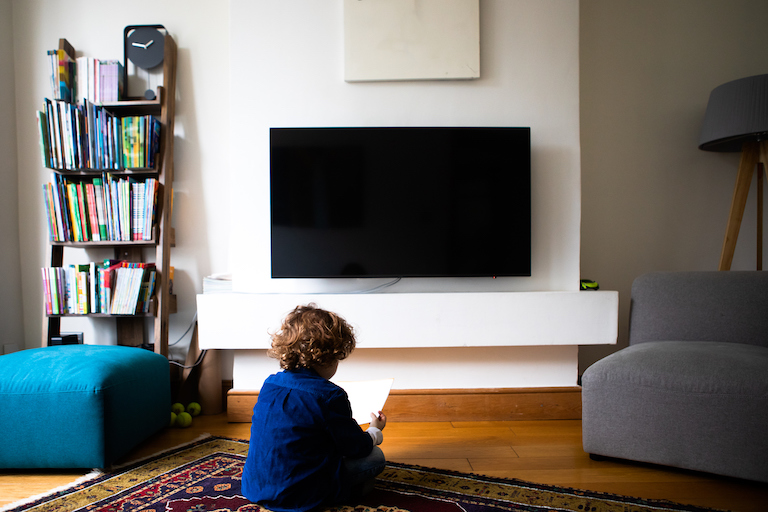
Find out how much TV antenna installation costs. Learn about cost factors including labor, materials, and ways to save on your TV antenna project.
If you must ghost someone, ghost your cable or satellite subscription service and get friendly with TV antennas instead


Another monthly cable bill, another surprise fee. The rising costs of cable may have you wondering if accessing primetime TV hour is even worth it these days—especially once you consider streaming services. Is it time to finally cut the cord?
TV antenna service may very well be the unsung savior you’ve been searching for. Recent quality enhancements and the ability to work alongside your favorite streaming service has many homeowners considering dumping subscription TV for good. Read on to learn more about TV antenna service and maybe—just maybe—you’ll consider enduring one final breakup call to your cable company.
A TV antenna service helps you pick up free, broadcasted channels from local or national TV networks without a cable or satellite subscription. There are three types of TV antennas:
Indoor digital antenna: Attaches to one TV to pick up nearby broadcast channels. This option is easy to install and usually the least expensive, but it works best for homes in cities or urban areas where broadcasting stations are close by.
Outdoor antenna: Anchored to the roof and works for all TVs in the home, this option works well in rural areas. However, weather and curious animals on the roof can impact your signal.
Attic antenna: Installed on a metal pole in your attic, this antenna also connects your whole home, but the signal must travel through the attic first, so it won’t be as clear as one from an outdoor antenna.
A TV antenna picks up broadcasts from TV stations and networks in the form of electromagnetic waves and transmits the audio and video signals to your TV. How clear your signal is will depend on the antenna type and its placement in your home. Like any common satellite service, an unobstructed view will attract the best signal. Bonus points if the antenna faces the direction of transmitters nearby.
You might have some nostalgia (okay, fine...frustration) having to constantly adjust the antennas on your parents’ TV just to watch a static-free version of your favorite morning cartoons. Today, digital TV antennas can provide better reception, more channel variety, and clearer pictures. Digital antennas also make it easier to connect to video streaming services and other add-ons.
TV antennas are a great solution for those who feel beaten down by cable TV, satellite bills, or your provider’s customer service. Like any alternative service, there are a few give and takes to consider.
Some benefits of TV antenna service include:
Free access to local and national programming
Compatibility with streaming services and other add-ons
Offers a variety of local channels that may not be accessible via cable or streaming services
Some drawbacks of TV antenna service include:
High upfront installation cost
Potential for blurry or static picture quality
Signal interruptions depending on weather
TV antenna service costs an average of $305 to install, but you’ll benefit from catching local and national news, and maybe even Monday Night Football for free. You can install indoor antennas yourself for as low as $20. Larger outdoor setups, which are often better at picking up more channels, may cost $200 to $300 for parts and installation.
If you plan to add tv antenna service to your roof or attic, hire a local TV antenna installer. Not only is this the safest option (climbing onto the roof to angle the antenna just right can create a fall hazard), but a professional will also have recommendations to help you get the most channels at the highest quality.

Maybe you ditched your TV antenna years ago because you were tired of cloud cover, harsh winds, or critters on the roof interrupting your reception. While you won’t always be able to guarantee crystal-clear reception, there are some ways to boost your signal.
The key to getting the best reception is the position of the antenna. Moving indoor antennas by even just a few inches can improve reception. Adjust the antenna slowly, as it takes time for the TV to register the new signals it is receiving.
You can also try a signal booster to improve your viewing on an antenna that’s signaling multiple TVs in your home. A signal booster costs about $10 to $25.
TV antennas channel offerings are restricted to whatever broadcasts they can pick up. In major metropolitans, though, you may get over 100 channels. Most TV antennas will pick up 70 to 100 channels, depending on your area. After you pay the upfront costs to install your antenna, you’ll never have to look at a monthly bill or face a cable contract again.
Cable TV will offer a variety of channels, which is ideal for families or sports fans who want to catch their favorite sports games. Cable may cost $20 to $100 per month, and you’re often locked into a contract that can be expensive to terminate. Aside from variety, a benefit of cable is that providers often promote discounts for bundling TV and internet services.
Streaming services are more popular than ever, with dozens of options to choose from. Individually, these options are less expensive than cable at about $5 to $50 per month, but multiple streaming accounts can quickly add up to surpass cable costs. Not all streaming services offer live TV, which is something to keep in mind if patience is not your strong suit.
If you are considering a TV antenna, the FCC recommends visiting Antenna Web to find the best antenna options for your location and channel needs.
From average costs to expert advice, get all the answers you need to get your job done.

Find out how much TV antenna installation costs. Learn about cost factors including labor, materials, and ways to save on your TV antenna project.

Find out the average antenna repair cost, key price factors, and ways to save. Get expert tips to budget for your antenna repair project.

Wondering how much does it cost to mount a TV? Get price ranges, key cost factors, and expert tips to help you budget for your TV mounting project.